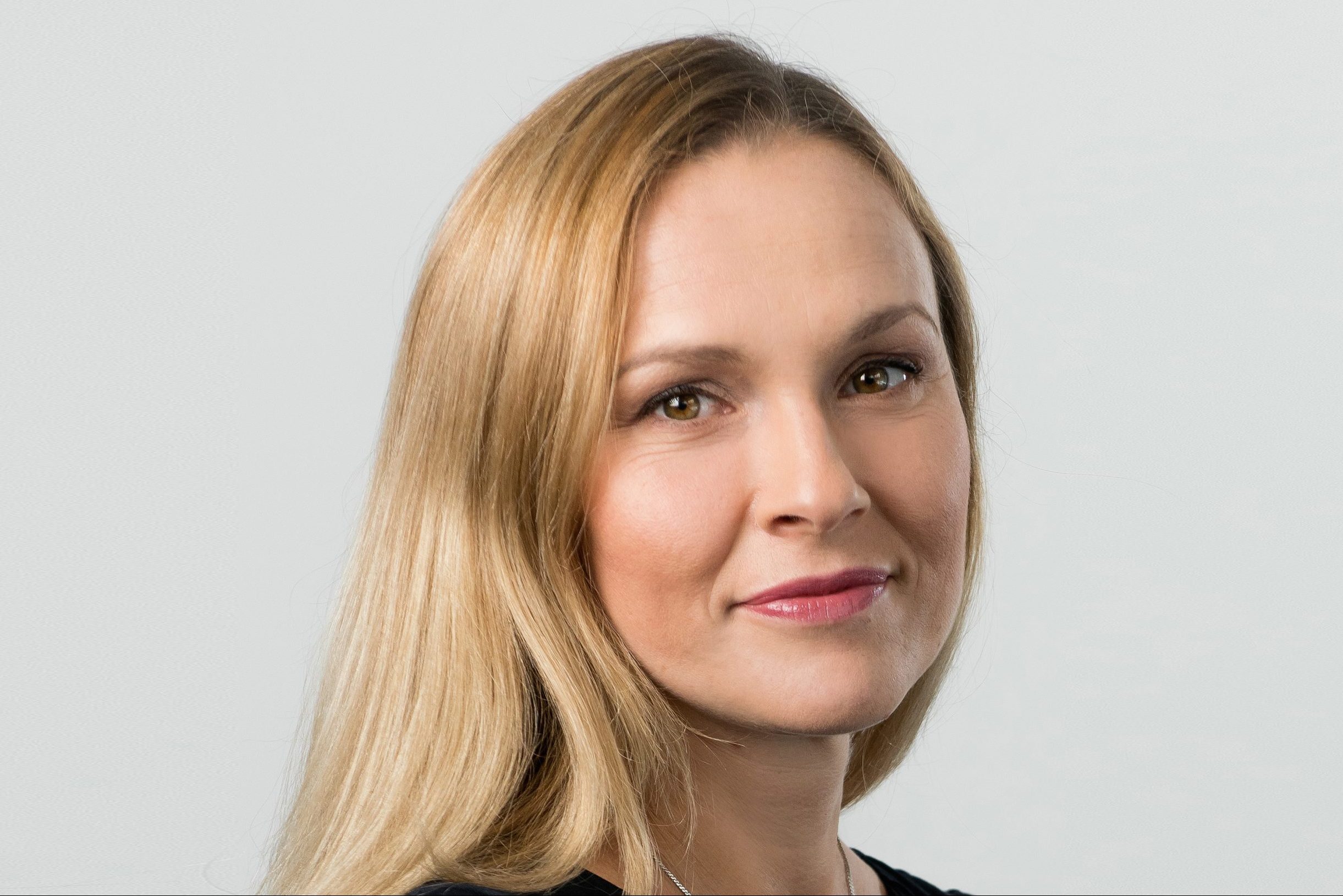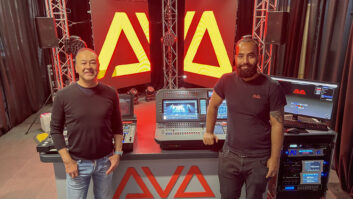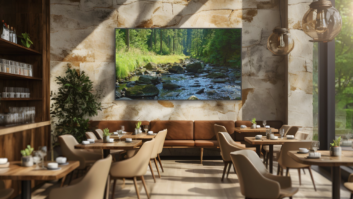
Following her move from NEC, we talk to Birgit Jackson, Sharp’s new commercial director for Visual Solutions, to find out her plans for this renowned Japanese manufacturer rebounding back into the mainstream.
What was your first order of business when you joined?
The role has quite a lot of responsibilities – on the one hand it’s heading up the product planning and product management – one of the first challenges was to get into the new roadmap and roadmap planning. What has happened to Sharp over the last 12 months is quite a big change, from a business that had financial problems to a business that’s secure and ambitious. With the Foxconn investment, suddenly it was possible to look into a new roadmap, to look into extending the product portfolio and this was at the time when I was coming in.
If this job had been offered about two years ago, before Foxconn got involved, would you still have been interested?
Two years ago Sharp was an interesting player because it’s one of the old Japanese brands. And with the established Japanese brands there’s lots of knowledge about panel technology, about technology overall actually. I think Sharp always had flagship products.
I come from the product management world so I’ve always been fascinated by new products and new technologies and also companies that do their own development, and Sharp is one of those companies. Two years ago I wouldn’t have ruled it out, that offer still would have been interesting. The most critical phase was the situation of financial insecurity.
Was the move a case of needing a new challenge, having been at NEC for nine years?
It’s the challenge of building something and that’s what I like very much about my job – it’s like working for a start-up. But in the background we also work very closely with the Document Solutions department because they kind of target the same customer group – corporate, which is important for Visual Solutions, but also for printers. So we’re trying to find the parallels.
How different, in terms of structure and processes, is Sharp as a company to NEC?
It still has the Japanese culture, which I like. That’s something I learned over the last 10 years. You have to deal with real people and people look after each other, so you think of the people that work for you and you work for, that’s quite a nice thing about Japanese companies, and a lot of respect, that’s something I like very much.
With Sharp I feel more like I’m in a corporation and as Visual Solutions we are a part of the whole Sharp group and integrated in that, and as I said before, it’s so nice to work with another business – Document Solutions, because we can benefit so much from each other. And with NEC, it’s structured as such that Display Solutions is one group by itself, because it’s a daughter company, so its structured a little differently so you do not really have the interface with the rest of NEC, you are like a company on its own. NEC is bigger in headcount, but it feels like working for a smaller company. Working for Sharp with a smaller headcount for Visual Solutions, but having this big Sharp machine in the background.
With NEC, their European headquarters was based in Germany, whereas here the European headquarters is based in Stockley Park in the UK, and it’s a little bit different – the work cultures. The Germans are very structured, ideally you are in the office 9-5. Whereas in Sharp’s headquarters in Europe, there are lots of people working remotely, and from different locations. For example, the service and quality assurance for Sharp is in Hamburg and the product management, so my team, is in Munich, and the marketing team is in Stockley Park. It’s lots of calls and lots of working with virtual teams, so it’s not so centred.
It’s the challenge of building something and that’s what I like very much about my job
Is the main aim to gradually increase market share, or expand the product portfolio?
I think it’s both. I think on the one hand, establishing Sharp and Sharp’s strength where it is today, so that’s the BIG PAD and the interactive displays, where Sharp has always been strong. BIG PAD leads the market with regards to the touch experience, which we call the ‘pen on paper experience’; how you write is like writing on paper, that’s our target from a user perspective. We would like to drive that further and next year introduce 4K products with a higher resolution and a higher resolution touch experience going along with that, so that’s important for us.
But on the other hand, in order to grow you have to have an offering for the mainstream market, and this gap we have already started to fill. We introduced a new product line the PN-Q series, so it’s 60, 70, 80, 90in entry-level products, but featuring additional features for that mainstream market. And then we would like to extend the portfolio with signage displays, but starting from 40 and 50in entry-level and two brightness categories and with embedded computer intelligence with System-on-Chip (SoC) and an open platform, so you can work with lots of different software partners. And then hopefully also growing in market share and growing with the market. Luckily we are in a growing market, we are not only dependent on getting market share from others we can also grow nicely with the market.
Are you still looking at OLED?
We are looking at it, because Sharp is also looking to be one of the major TV brands, but Sharp is also looking at LCD technology still, which has not reached its technical limits yet and has also lots of advantages compared to OLED regarding picture quality and lifetime.
For the professional area, I think OLED is not where it has to be from operating time, but also from a quality point of view. It looks great with regard to colours and deep black and very good white, but it has to have moving content, it’s critical when it comes to signage for example. You can’t even have your logo in the corner without having it burned in. We will have to wait and see where the technology goes.
With the investment from Foxconn, are you spoilt for choice in terms of areas you can invest in?
When we look at the roadmap, we come very much from a market point of view, so we look at what are the growing market segments and then we look at who the users are in this market segment and what are the products we would like to bring into our roadmap. At the moment we are targeting the corporate collaboration market and the digital signage market, so we are filling those gaps and planning those products in our roadmap. I think this is also the way forward, to look at the market and look at the potential of that market and then the user needs and bring it all together and bring the right products out.
What is your timeline for getting back to the top tier of the market?
I would say within the next five years. This is reflected in our mid-term planning – to grow significantly. At the moment we’re growing quite quickly, but that always depends on the level you are coming from. We are growing quite nicely, but the market is also growing. To gain one more per cent market share is quite a lot. But I would say five years is probably reasonable.
In order to grow you have to have an offering for the mainstream market
What effect do you think the dominance of Samsung and LG has had on this market?
I think there is a chance for other brands in the market, especially the ones that have a strong brand name and are known for their expertise. Clearly a market leader is always under attack – some competition comes in via price point, I think that is not our way of addressing the market. I think for the mainstream as a leading brand you would also have to have flagship products and show technology leadership.
I think that markets can change, that’s what I experienced in the past – I was also in the mobile phone industry. If you look at that market, when I was in the mobile phone business it was Nokia that was the leading brand and that changed completely didn’t it? Nobody would have thought it would be anyone else.
This is why it’s so important to be innovative. The market for displays is still developing, it’s growing, it’s innovative and this is so important for the leading brands to be innovative, to look into new technologies, and especially what the user is expecting. I think in the end, the successful brands they do products that are attractive from a user perspective, not just the best price because that’s probably something that you buy once then you throw it away and buy another brand.
There is movement in the market, but no doubt companies like LG and Samsung have the money to invest in innovation. But we also have some good backing so we will see what happens.
How is the ISE planning going?
We are in heavy planning. We started planning in the summer and last ISE we announced a lot of things that could happen and this ISE we’ll be launching the things that we announced before. So it is the year for us bringing products into the market we’ve been talking about before. ISE comes just at the right time to do all that, because from January we are launching lots of new products. The new signage products we’ve been talking about, starting with 40-50in, but completing the whole range over the year 2018. And also launching a new flagship BIG PAD product, so that’s quite a lucky situation.
I had a couple of years at ISE where we really had to think about a story. But this will not be the case, so we will have lots of new products to show and really exciting products, so that’s nice and I think we made a big step with the stand and the whole appearance of Sharp last year.
I think this year we would like to look more from a user perspective into the solutions we are going to show, what’s the benefit of them for the various target groups – corporate and education – to name two important ones for us.







